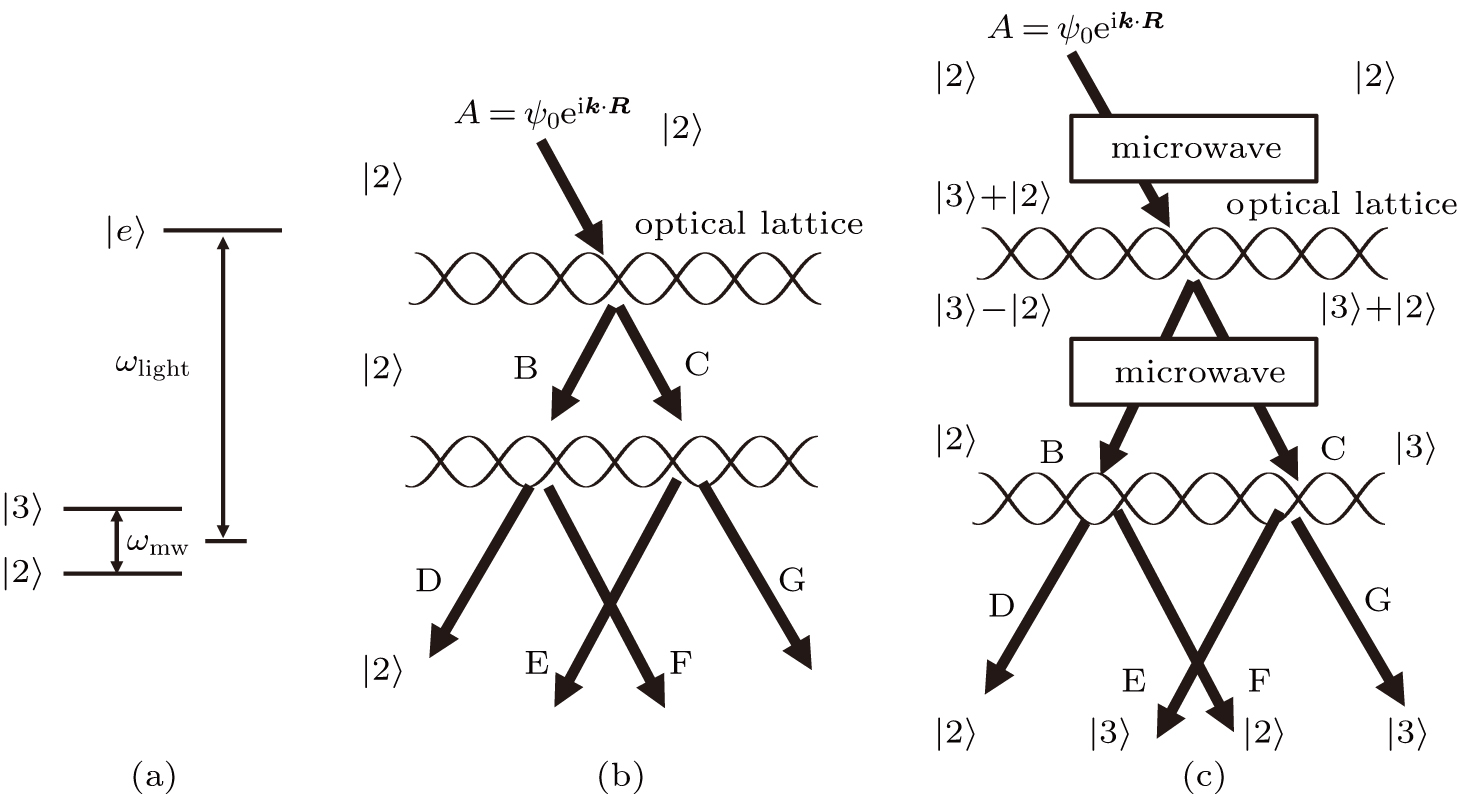Atom interferometers with weak-measurement path detectors and their quantum mechanical analysis
Illustration of a MZI-YI mixture-type WM-AI involving two 1D optical-lattice Bragg gratings to serve as the first and second atomic beam slitter and two microwave pulses to prepare the bound electron in a specific hyperfine state to offer which-path information of the atom, and with both operations not degrading the coherence of the atom beam. (a) Relevant energy level of the Rydberg atom consisting of two ground hyperfine electronic states and one upper excited state; (b) the setup used to measure the wave nature of the atom, which involves only two atomic beam splitters but without applying the two microwave pulses to deliberately prepare the internal bound electron in a desirable hyperfine state; (c) the setup used to measure the particle nature of the atom, which involves both beam splitters and two microwave pulses to offer the which-path information of the atom via the internal quantum state. As the atom center-of-mass wave function is nearly not influenced by the microwave-pulse which-path probe action with an energy scale much smaller than the atom momentum energy, the WM-PD can unanimously monitor the passage of each atom so that the path distinguishability is D = 1, and the interference fringe visibility still maintains a nearly perfect level of
